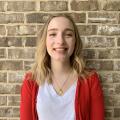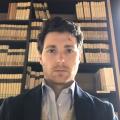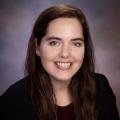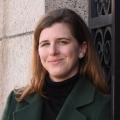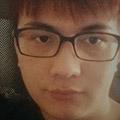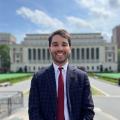Every summer, CLST supplements the stipends granted to PhD students to enable them to pursue opportunities around the world that are related to their research and/or academic development. For more information about the wide variety of activities undertaken by our students, please see below.
SUMMER RESEARCH
2024
- Sebastiano Belleggia
Sebastiano Belleggia
Ancient Philosophy; Logic and Philosophy of Language; Metaphysics; History of Biology
- Wooseok Kim
Wooseok Kim
Ancient Philosophy
- Charlotte Mandy
Charlotte Mandy
Ancient Roman Material Culture; Popular Religion; Slavery; Domestic Spaces
- Araceli Rizzo
Araceli Rizzo
Hellenistic Archaeology and History; Numismatics; Amphora Stamps
- Ayelet Wenger
Ayelet Wenger
Roman Near East; late antique literatures; Jews in the Roman Empire
- Shannon Oliver White
Shannon Oliver White
Ancient Greek & Near Eastern history; Mediterranean archaeology; Border Theory
Sebastiano Belleggia
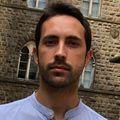
Sebastiano Belleggia
Ancient Philosophy; Logic and Philosophy of Language; Metaphysics; History of Biology
I spent most of my summer in New York City, attending an intensive eight-week Arabic course. This is part of a long-term plan to study in depth the commentary tradition for my dissertation project on Aristotle’s logic. Since I want to be able to access not only Greek and Latin commentaries, but also Arabic commentaries, especially Ibn-Sina and Ibn-Rushd, I am grateful that the Classical Studies program was willing to cover the cost for books and dictionary that I needed for the course through the CLST Summer Funding Grant. As for now, I am already able to read a text with the help with a dictionary and I am taking another Arabic course to reach higher proficiency in the language.
Apart from Arabic, this summer in New York was also a great opportunity to do some readings that I thought could be useful towards my qualifying exams and dissertation project: Aristotle’s Rhetoric, Politics, Quintilian and Cicero are some of the authors and texts that I have been working on during the summer as part of my study of non-scientific ways of reasoning in the Aristotelian tradition.
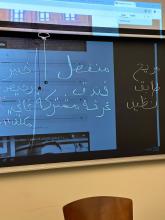
This summer’s research consisted of three phases: first, I attended a South Korean conference in ancient philosophy to get a sense of what is going on in the field in South Korea; second, I participated in a summer school in ancient philosophy held in Fribourg, Switzerland; and third, I took a summer intensive German course to fulfil the language requirement. All three endeavors were fruitful.
First, I successfully completed the summer German course, gaining basic confidence in reading German texts. This enabled me to attempt reading key scholarship in German relevant to my interests, including Michael Frede’s Göttingen dissertation on Plato’s Sophist and Frede and Patzig’s commentary on Aristotle’s Metaphysics Ζ, among others.
Second, the ancient philosophy conference was beneficial, allowing me to reconnect with Korean scholars in the field. Notably, Prof. Kwon’s paper on the notion of pleasure in Aristotle and Prof. Cho’s paper on the “zetetic syllogism,” a term coined by Prof. Cho, were particularly interesting. On a side note, I’d like to mention that Prof. Cho’s paper references the late Professor Bolton’s work on Aristotle’s methodology, who passed away recently. This highlights both the global reach of the field and Prof. Bolton’s intelligence.
Third, the summer school was an extraordinary experience for me. Particularly noteworthy were two lectures: one by Prof. Crivelli on the self-refutation argument in the Theaetetus and another by Dr. Hasper on the conceptual scheme of knowledge and the knowable in Plato and Aristotle. Prof. Crivelli’s lecture demonstrated his intellectual passion for Plato, serving as a model of scholarship, while Dr. Hasper’s lecture exemplified uncovering hidden elements within the text, which provided me with valuable insights into the epistemological questions that concerned Plato and Aristotle.
Finally, I’d like to mention that I met with graduate students studying ancient philosophy at various institutions. I felt the lively atmosphere of the discipline and am confident that the conversations I had with them will continue on various occasions in the near future.
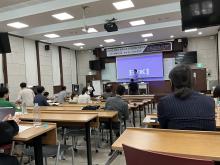

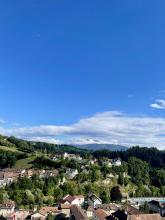
Charlotte Mandy

Charlotte Mandy
Ancient Roman Material Culture; Popular Religion; Slavery; Domestic Spaces
Over the last few months, I split my time between a German reading course here in Manhattan and archaeological work and research in Italy and the UK. The former was a five week introduction to reading academic German, culminating in a useful capacity to read some articles for my MA thesis. I worked on my thesis throughout the summer, exploring ‘servile’ Hellenistic and Roman functional objects—that is, primarily lamps and flasks that seem to depict slaves or attendants, employing their functionality and self-referentiality to ‘shift’ or remark upon the status of their users.
In July, I had the honor of returning to the final field season of the project that first introduced me to methods and questions of Roman archaeology: I worked for a month alongside the archaeologists whose generously shared knowledge remains fundamental to my approach to the field and to the past. The Marzuolo Archaeological Project (MAP), which I was able to take part in the last three summers, finished up its over a decade-long delve into a Tuscan rural craft site—workshops and residences occupied from the 1st century BC to the 3rd century CE. While the trench I supervised was sometimes “drain”-ing (see drain photo below),we received a thorough education in the detail work required by the palimpsestic features of ancient functional spaces, such as an undulating opus signinium (or ‘cocciopesto’) floor! Ultimately, we had the satisfaction of puzzling through complex stratigraphy, answering questions about the relative dating of some of the oldest parts of the site. Thanks to the CLST summer funding, and the indispensable 5 AM espressi it enabled throughout the excavation, I will cherish this summer’s contribution to my experiential knowledge as a field archaeologist, and the friendships forged in the incomparable scrape and shuffle of trench life.
Following the excavation, I spent several days traveling to museums and sites in Rome and, while staying with family in London, continued my work towards an article provisionally titled “Becoming Well Aware: Self-referential Ancient Roman Wellheads.” I also had the opportunity to dive more generally into water management and supply, everywhere from a Roman domus in Lucca (following accidentally, or providentially, renting a room from another archaeologist, who directed me to her museum!) to the fascinating medieval hydraulic system of Siena. Altogether, I regard them as months well spent, and the next stages of my research and coursework on campus will be animated by the summer’s experiences, everywhere from Hamilton Hall to a stone-strewn orchard in Tuscany to the Musei Vaticani. I remain grateful for the personal, academic, and professional development that the generous CLST funding made possible.

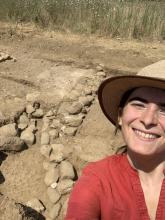
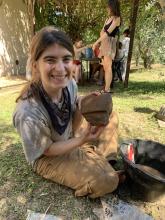
Araceli Rizzo

Araceli Rizzo
Hellenistic Archaeology and History; Numismatics; Amphora Stamps
This summer, I participated in the Pella Urban Dynamics Project, an archaeological excavation in northern Greece which studies the Classical and Hellenistic city of Pella, with a particular focus on houses and domestic life. This was the third year of the Project, and my third year participating. I was delighted to learn that I would be supervising a trench this season, a position which afforded me the opportunity to think more deeply about the project and the building which we are excavating. In addition to the requirements of my position, I also spent some time thinking about how objects come to be in domestic archaeological contexts. With houses, there is often post-abandonment usage, which drastically affects the materials left to enter the archaeological record. This, of course, made me think of the amphora stamps which have been found at Pella, which are not insignificant in number. Most of the excavation at Pella prior to the Project has been on the agora and palace, which would have also experienced post-abandonment use, unlike a tomb. As such, I wonder how this might have affected the types and quantities of amphora stamps found in Pella.
Regarding my research, I had hoped for a chance to consider amphora stamps in their archaeological context, rather than from a purely historical perspective. The Pella Museum had an extensive display of the types of amphora stamps from Pella, including some from Rhodes, as well as maps of the dispersion of amphora stamps. I was also able to spend some time getting to know the pottery team at Pella, who had a lot of great insight on transport amphoras, even beyond those from Pella. Speaking to other people on the excavation was also helpful in that they were able to raise questions and ideas that had not occurred to me. For instance, I was asked how far amphora stamp data can carry us, when stamped amphoras are only a fraction of the amphoras produced, and indeed of those which we find. This is a question which I am still trying to answer. I was even fortunate enough to travel to Thassos for a weekend and view Thasian materials (both Thasian amphoras and other amphoras which were imported to Thassos) in-person.
Even outside of my research interests, I learned a great deal in Pella. Supervising a trench meant that I was in a position of teaching new skills and overseeing my students’ work. As I approach my first time teaching this semester, I am very grateful for that opportunity, where I was able to learn some of the skills of teaching with a small group, and with the help of more experienced supervisors nearby. Many of these other supervisors are also longtime friends, both from my time at Michigan and from my previous seasons at Pella. I will always be grateful for time spent with my dear friends on excavation.
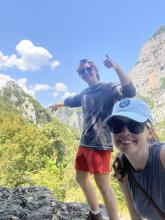
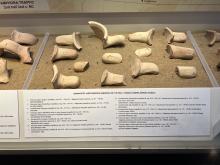
Ayelet Wenger

Ayelet Wenger
Roman Near East; late antique literatures; Jews in the Roman Empire
Thanks to the Classical Studies Summer Fund, I spent the summer in Jerusalem, using the unparalleled resources of the National Library of Israel to further my research. I also joined the Hebrew University Talmud department's tour of the archaeological sites of Etri and Burgin in the Judaean hills, as well as the Hebrew University Classics department's tour of the site of Midras, both led by archaeologists who had worked on the sites. I also made a trip to Rome, where I was able to see some of the Christian catacombs, and to Cyprus, where I visited some sites around Paphos. I'm very grateful to Classical Studies for making my research and travels possible this summer.
Shannon Oliver White

Shannon Oliver White
Ancient Greek & Near Eastern history; Mediterranean archaeology; Border Theory
With support from CLST I spent the majority of this summer in Greece, where I worked for six weeks excavating at the site of the ancient Macedonian city Pella as part of the Pella Urban Dynamics Project (Pic 1). In addition to the practical elements of working on a dig, this project allowed me to familiarize myself with the architecture, layout, and contents of Greek houses and engage with the urban landscape of an ancient city. I was often encouraged to step back and look broadly at the area in which we were working, and to speculate how the space had been used and how the area had evolved over time to produce the landscape visible today. I have always been interested in place and how one’s immediate environment shapes lived experiences, and this project provided me with the opportunity to think productively about the history of the city, its inhabitants, and their relationship to the landscape.
I used the time when not working in the field to travel around northern Greece and was able to visit the Macedonian royal tombs and the palace at Vergina; Thessaloniki, including the archaeological museum and the city’s many Byzantine monuments; Mount Olympus (Pic. 2); and the island of Thasos. Following the excavation, I spent another week traveling to Santorini and Athens, where I was able to visit several museums and archaeological sites, including Akrotiri, ancient Thera, Kerameikos, and Delphi (Pic 3). Being able to walk around these sites gave me a much better sense of the space and scale of ancient building projects. In particular Delphi and Thera, both located on mountains, and Thasos, whose coastal marble quarries provided a unique opportunity for maritime trade stretching back to the 7th century, were integral for thinking about both the limitations and the opportunities provided by less traditionally accessible landscapes.
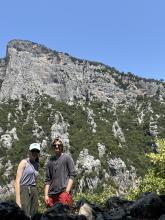

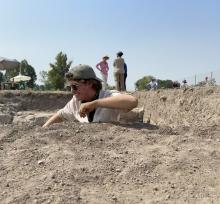
2023
- Sebastiano Belleggia
Sebastiano Belleggia
Ancient Philosophy; Logic and Philosophy of Language; Metaphysics; History of Biology
- Giulia Bertoni
Giulia Bertoni
Iconographic Tradition; Classical Art and Archaeology; Early Modern Art History; Archaic and Classical Greek Literature
- Abigail Breuker
Abigail Breuker
Ancient Philosophy; Epistemology
- Francesco Cassini
Francesco Cassini
Classical Art and Archaeology; Roman History and Epigraphy
- Margaret Corn
Margaret Corn
Ancient and Comparative Philosophy; Pythagoreanism; Music; Mathematics; Near-Eastern and South Asian Studies
- Mary-Evelyn Farrior
Mary-Evelyn Farrior
Roman History, Archaeology; Greco-Roman Cultural Interaction
- Wooseok Kim
Wooseok Kim
Ancient Philosophy
- Shenda Kuang
Shenda Kuang
Hellenistic History; Acculturation; Identity Politics; Classical Athens
- Giovanni Lovisetto
Giovanni Lovisetto
Classical Art and Archaeology; Epigraphy; Greek and Roman History; Greek and Roman Architecture; Greek Literature
- Susan Rahyab
Susan Rahyab
History of Roman Egypt; Roman Administration and Imperialism; Greek and Roman History; Greek Documentary Papyrology
- Ayelet Wenger
Ayelet Wenger
Roman Near East; late antique literatures; Jews in the Roman Empire
Sebastiano Belleggia

Sebastiano Belleggia
Ancient Philosophy; Logic and Philosophy of Language; Metaphysics; History of Biology
I spent most of my summer in New York City, attending an intensive eight-week Arabic course. This is part of a long-term plan to study in depth the commentary tradition for my dissertation project on Aristotle’s logic. Since I want to be able to access not only Greek and Latin commentaries, but also Arabic commentaries, especially Ibn-Sina and Ibn-Rushd, I am grateful that the Classical Studies program was willing to cover the cost for books and dictionary that I needed for the course through the CLST Summer Funding Grant. As for now, I am already able to read a text with the help with a dictionary and I am taking another Arabic course to reach higher proficiency in the language.
Apart from Arabic, this summer in New York was also a great opportunity to do some readings that I thought could be useful towards my qualifying exams and dissertation project: Aristotle’s Rhetoric, Politics, Quintilian and Cicero are some of the authors and texts that I have been working on during the summer as part of my study of non-scientific ways of reasoning in the Aristotelian tradition.

This summer’s research consisted of three phases: first, I attended a South Korean conference in ancient philosophy to get a sense of what is going on in the field in South Korea; second, I participated in a summer school in ancient philosophy held in Fribourg, Switzerland; and third, I took a summer intensive German course to fulfil the language requirement. All three endeavors were fruitful.
First, I successfully completed the summer German course, gaining basic confidence in reading German texts. This enabled me to attempt reading key scholarship in German relevant to my interests, including Michael Frede’s Göttingen dissertation on Plato’s Sophist and Frede and Patzig’s commentary on Aristotle’s Metaphysics Ζ, among others.
Second, the ancient philosophy conference was beneficial, allowing me to reconnect with Korean scholars in the field. Notably, Prof. Kwon’s paper on the notion of pleasure in Aristotle and Prof. Cho’s paper on the “zetetic syllogism,” a term coined by Prof. Cho, were particularly interesting. On a side note, I’d like to mention that Prof. Cho’s paper references the late Professor Bolton’s work on Aristotle’s methodology, who passed away recently. This highlights both the global reach of the field and Prof. Bolton’s intelligence.
Third, the summer school was an extraordinary experience for me. Particularly noteworthy were two lectures: one by Prof. Crivelli on the self-refutation argument in the Theaetetus and another by Dr. Hasper on the conceptual scheme of knowledge and the knowable in Plato and Aristotle. Prof. Crivelli’s lecture demonstrated his intellectual passion for Plato, serving as a model of scholarship, while Dr. Hasper’s lecture exemplified uncovering hidden elements within the text, which provided me with valuable insights into the epistemological questions that concerned Plato and Aristotle.
Finally, I’d like to mention that I met with graduate students studying ancient philosophy at various institutions. I felt the lively atmosphere of the discipline and am confident that the conversations I had with them will continue on various occasions in the near future.



Charlotte Mandy

Charlotte Mandy
Ancient Roman Material Culture; Popular Religion; Slavery; Domestic Spaces
Over the last few months, I split my time between a German reading course here in Manhattan and archaeological work and research in Italy and the UK. The former was a five week introduction to reading academic German, culminating in a useful capacity to read some articles for my MA thesis. I worked on my thesis throughout the summer, exploring ‘servile’ Hellenistic and Roman functional objects—that is, primarily lamps and flasks that seem to depict slaves or attendants, employing their functionality and self-referentiality to ‘shift’ or remark upon the status of their users.
In July, I had the honor of returning to the final field season of the project that first introduced me to methods and questions of Roman archaeology: I worked for a month alongside the archaeologists whose generously shared knowledge remains fundamental to my approach to the field and to the past. The Marzuolo Archaeological Project (MAP), which I was able to take part in the last three summers, finished up its over a decade-long delve into a Tuscan rural craft site—workshops and residences occupied from the 1st century BC to the 3rd century CE. While the trench I supervised was sometimes “drain”-ing (see drain photo below),we received a thorough education in the detail work required by the palimpsestic features of ancient functional spaces, such as an undulating opus signinium (or ‘cocciopesto’) floor! Ultimately, we had the satisfaction of puzzling through complex stratigraphy, answering questions about the relative dating of some of the oldest parts of the site. Thanks to the CLST summer funding, and the indispensable 5 AM espressi it enabled throughout the excavation, I will cherish this summer’s contribution to my experiential knowledge as a field archaeologist, and the friendships forged in the incomparable scrape and shuffle of trench life.
Following the excavation, I spent several days traveling to museums and sites in Rome and, while staying with family in London, continued my work towards an article provisionally titled “Becoming Well Aware: Self-referential Ancient Roman Wellheads.” I also had the opportunity to dive more generally into water management and supply, everywhere from a Roman domus in Lucca (following accidentally, or providentially, renting a room from another archaeologist, who directed me to her museum!) to the fascinating medieval hydraulic system of Siena. Altogether, I regard them as months well spent, and the next stages of my research and coursework on campus will be animated by the summer’s experiences, everywhere from Hamilton Hall to a stone-strewn orchard in Tuscany to the Musei Vaticani. I remain grateful for the personal, academic, and professional development that the generous CLST funding made possible.



Araceli Rizzo

Araceli Rizzo
Hellenistic Archaeology and History; Numismatics; Amphora Stamps
This summer, I participated in the Pella Urban Dynamics Project, an archaeological excavation in northern Greece which studies the Classical and Hellenistic city of Pella, with a particular focus on houses and domestic life. This was the third year of the Project, and my third year participating. I was delighted to learn that I would be supervising a trench this season, a position which afforded me the opportunity to think more deeply about the project and the building which we are excavating. In addition to the requirements of my position, I also spent some time thinking about how objects come to be in domestic archaeological contexts. With houses, there is often post-abandonment usage, which drastically affects the materials left to enter the archaeological record. This, of course, made me think of the amphora stamps which have been found at Pella, which are not insignificant in number. Most of the excavation at Pella prior to the Project has been on the agora and palace, which would have also experienced post-abandonment use, unlike a tomb. As such, I wonder how this might have affected the types and quantities of amphora stamps found in Pella.
Regarding my research, I had hoped for a chance to consider amphora stamps in their archaeological context, rather than from a purely historical perspective. The Pella Museum had an extensive display of the types of amphora stamps from Pella, including some from Rhodes, as well as maps of the dispersion of amphora stamps. I was also able to spend some time getting to know the pottery team at Pella, who had a lot of great insight on transport amphoras, even beyond those from Pella. Speaking to other people on the excavation was also helpful in that they were able to raise questions and ideas that had not occurred to me. For instance, I was asked how far amphora stamp data can carry us, when stamped amphoras are only a fraction of the amphoras produced, and indeed of those which we find. This is a question which I am still trying to answer. I was even fortunate enough to travel to Thassos for a weekend and view Thasian materials (both Thasian amphoras and other amphoras which were imported to Thassos) in-person.
Even outside of my research interests, I learned a great deal in Pella. Supervising a trench meant that I was in a position of teaching new skills and overseeing my students’ work. As I approach my first time teaching this semester, I am very grateful for that opportunity, where I was able to learn some of the skills of teaching with a small group, and with the help of more experienced supervisors nearby. Many of these other supervisors are also longtime friends, both from my time at Michigan and from my previous seasons at Pella. I will always be grateful for time spent with my dear friends on excavation.


Ayelet Wenger

Ayelet Wenger
Roman Near East; late antique literatures; Jews in the Roman Empire
Thanks to the Classical Studies Summer Fund, I spent the summer in Jerusalem, using the unparalleled resources of the National Library of Israel to further my research. I also joined the Hebrew University Talmud department's tour of the archaeological sites of Etri and Burgin in the Judaean hills, as well as the Hebrew University Classics department's tour of the site of Midras, both led by archaeologists who had worked on the sites. I also made a trip to Rome, where I was able to see some of the Christian catacombs, and to Cyprus, where I visited some sites around Paphos. I'm very grateful to Classical Studies for making my research and travels possible this summer.
Shannon Oliver White

Shannon Oliver White
Ancient Greek & Near Eastern history; Mediterranean archaeology; Border Theory
With support from CLST I spent the majority of this summer in Greece, where I worked for six weeks excavating at the site of the ancient Macedonian city Pella as part of the Pella Urban Dynamics Project (Pic 1). In addition to the practical elements of working on a dig, this project allowed me to familiarize myself with the architecture, layout, and contents of Greek houses and engage with the urban landscape of an ancient city. I was often encouraged to step back and look broadly at the area in which we were working, and to speculate how the space had been used and how the area had evolved over time to produce the landscape visible today. I have always been interested in place and how one’s immediate environment shapes lived experiences, and this project provided me with the opportunity to think productively about the history of the city, its inhabitants, and their relationship to the landscape.
I used the time when not working in the field to travel around northern Greece and was able to visit the Macedonian royal tombs and the palace at Vergina; Thessaloniki, including the archaeological museum and the city’s many Byzantine monuments; Mount Olympus (Pic. 2); and the island of Thasos. Following the excavation, I spent another week traveling to Santorini and Athens, where I was able to visit several museums and archaeological sites, including Akrotiri, ancient Thera, Kerameikos, and Delphi (Pic 3). Being able to walk around these sites gave me a much better sense of the space and scale of ancient building projects. In particular Delphi and Thera, both located on mountains, and Thasos, whose coastal marble quarries provided a unique opportunity for maritime trade stretching back to the 7th century, were integral for thinking about both the limitations and the opportunities provided by less traditionally accessible landscapes.





